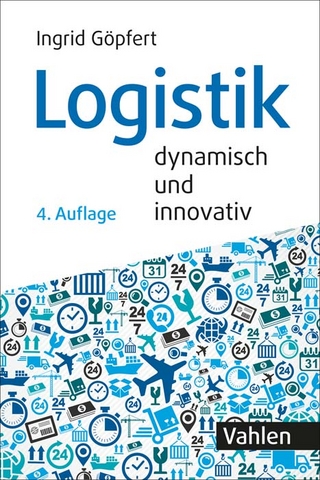
Operations Strategy
Pearson Education Limited (Verlag)
978-1-292-45927-1 (ISBN)
Dr Arijit Bhattacharya, Associate Professor in Operations & Supply Chain Management, Norwich Business School, UEA
The go-to resource on operations strategy, exploring key activities, processes and decisions adopted by a wide range of businesses Operations Strategy, 7th edition encourages a thorough understanding of the topic, building on concepts from strategic and operations management to marketing and HR management.
The way an organisation manages their operations strategically can have a huge impact on its prospects – whether large or small, service or manufacturing, for-profit or not-for-profit, international or local. Operations strategy is fundamental to the success of any organisation and a major source of competitive advantage.
The text encourages you to explore the key strategic decisions adopted by a wide range of organisations in different sectors, and is ideal for MBA students, upper-level undergraduates, postgraduates and executives.
"Slack and Lewis have approached the ethical, societal, and environmental issues affecting business operations strategy in a post-pandemic world, with a blend of new chapters and contemporary case studies based on both external and internal contexts – an essential item for any serious Operations Strategy resource list."
Jamie Rundle, Senior Lecturer in Management, Nottingham Business School, UK
New to this edition:
More on responsible and sustainable operations brings the book up to date with recent developments, showing how operations impact social, ethical, and environmental issues.
Increased emphasis on risk in operations strategy and the importance of external and internal context.
Updated with several new examples throughout – now including an even wider range of different types of organisation.
Four new case studies (bringing the total to 18) explore real-life practical applications to use in class or individually to ground theoretical concepts: House Partnerships at Concept Design Services, IKEA Looks to the Future, Kaston-Trenton Services, and computer game development at Widescale Studio.
"To me, the textbook of Slack and Lewis is the best in the field of Operations Strategy."
Jan de Vries, Professor of Operations Management, University of Groningen, The Netherlands
Nigel Slack is an Emeritus Professor of Operations Management and Strategy at Warwick Business School, Honorary Professor at Bath and Birmingham Universities, and Honorary Fellow of the European Operations Management Association. Michael Lewis is a Professor of Operations and Supply Management at Bath School of Management.
Preface Authors' acknowledgements Chapter 1 What is operations strategy?
Introduction
1.1 Why is operations excellence fundamental to strategic success?
1.2 What is operations strategy and how is it different from operations
management?
1.3 How should operations strategy reflect overall strategy (top-down)?
1.4 How do the requirements of the market influence operations
strategy (outside-in)?
1.5 How can operations strategy learn from operational experience
(bottom-up)?
1.6 How can the intrinsic capabilities of an operation's resources
influence operations strategy (inside-out)?
Summary answers to key questions
Further reading
Notes on the chapter
Chapter 2 The context, content and process of operations strategy
Introduction
2.1 What is the difference between the ‘context', ‘content' and the
‘process' of operations strategy?
2.2 What is the context of operations strategy?
2.3 What is the content of operations strategy?
2.4 What is the process of operations strategy?
Summary answers to key questions
Further reading
Notes on the chapter
Chapter 3 Operations performance
Introduction
3.1 What is meant by operations performance?
3.2 How is operations performance judged at a societal level?
3.3 How is operations performance judged at a strategic level?
3.4 How is operations performance judged at an operational level?
3.5 Does the relative importance of performance objectives vary over time?
3.6 Do operations performance objectives trade-off against each other? 3.7 What are the advantages and disadvantages of focused operations?
Summary answers to key questions
Further reading
Notes on the chapter
Chapter 4 Responsible operations strategy
Introduction
4.1 What is responsible operations strategy?
4.2 How does the environmental dimension of responsibility affect
operations strategy?
4.3 How does the social dimension of responsibility affect operations
strategy?
4.4 How does the economic dimension of responsibility affect
operations strategy?
4.5 How does the stakeholder dimension of responsibility affect
operations strategy?
4.6 How does the voluntariness dimension of responsibility affect
operations strategy?
Summary answers to key questions
Further reading
Notes on the chapter
Chapter 5 Capacity strategy
Introduction
5.1 What is capacity strategy?
5.2 How much capacity should an operation have?
5.3 How many separate sites should an operation have?
5.4 What issues are important when changing capacity levels?
5.5 What tasks should be allocated to sites?
5.6 Where should capacity be located?
Summary answers to key questions
Further reading
Notes on the chapter
Chapter 6 Purchasing and supply strategy
Introduction
6.1 What is purchasing and supply strategy?
6.2 What should we do and what should we buy?
6.3 How we buy: what is the role of contracts and/or relationships?
6.4 How do we manage supply dynamics?
6.5 How do we manage supply networks over time?
6.6 How do we manage supply chain risks?
Summary answers to key questions
Further reading
Notes on the chapter
Chapter 7 Process technology strategy
Introduction
7.1 What is process technology strategy and why is it becoming
more important?
7.2 How can process technology be characterised?
7.3 How do market volume and variety influence process technology?
7.4 How can process technology be evaluated strategically?
Summary answers to key questions
Further reading
Notes on the chapter
Chapter 8 Improvement strategy
Introduction
8.1 What are the different approaches to improvement?
8.2 How do the needs of the market direct the ongoing development
of operations processes?
8.3 How can the ongoing management and control of operations be
harnessed to develop their capabilities?
8.4 What can operations do to deploy their capabilities into the market?
Summary answers to key questions
Further reading
Notes on the chapter
Chapter 9 Product and service development strategy
Introduction
9.1 What is the relationship between innovation, design and creativity?
9.2 Why is the way in which companies develop their products and
services so important?
9.3 What process do companies use to develop products and services?
9.4 How should the effectiveness of the product and service development
process be judged in terms of fulfilling market requirements?
9.5 What operations resource-based decisions define a company's
product and service development strategy?
Summary answers to key questions
Further reading
Notes on the chapter
Chapter 10 The process of operations strategy – formulation and implementation
Introduction
10.1 What is the ‘formulation' of operations strategy?
10.2 What is involved in maintaining alignment over time?
10.3 What analysis is needed for formulation?
10.4 What is operations strategy implementation?
10.5 Who can be responsible for implementation? Summary answers to key questions
Further reading
Notes on the chapter
Chapter 11 The process of operations strategy – monitoring and control
Introduction
11.1 What are the differences between operational and strategic
monitoring and control?
11.2 How is progress towards strategic objectives tracked?
11.3 How can monitoring and control attempt to control risks?
11.4 How does learning contribute to strategic control?
Summary answers to key questions
Further reading
Notes on the chapter
Topics covered in case studies
List of case studies
Aarens Electronic
Aztec Component Supplies
Clever Consulting
Delta Synthetic Fibres (DSF)
Developing ‘Savory Rosti-crisps' at Dreddo Dan's
Design house partnerships at Concept Design Services
Disneyland Resort Paris
Dresding Medical
Hagen Style
IKEA looks to the future
Kaston-Trenton Services (KTS)
McDonald's: half a century of growth
Ontario Facilities Equity Management (OFEM)
Slagelse Industrial Services (SIS)
Turnround at the Preston Plant
Widescale Studio and the Fierybryde development
Zara's operating model
Zentrill
Glossary Index
| Erscheinungsdatum | 24.10.2023 |
|---|---|
| Verlagsort | Harlow |
| Sprache | englisch |
| Maße | 190 x 245 mm |
| Gewicht | 960 g |
| Themenwelt | Wirtschaft ► Betriebswirtschaft / Management ► Logistik / Produktion |
| Wirtschaft ► Betriebswirtschaft / Management ► Unternehmensführung / Management | |
| ISBN-10 | 1-292-45927-1 / 1292459271 |
| ISBN-13 | 978-1-292-45927-1 / 9781292459271 |
| Zustand | Neuware |
| Haben Sie eine Frage zum Produkt? |
aus dem Bereich


